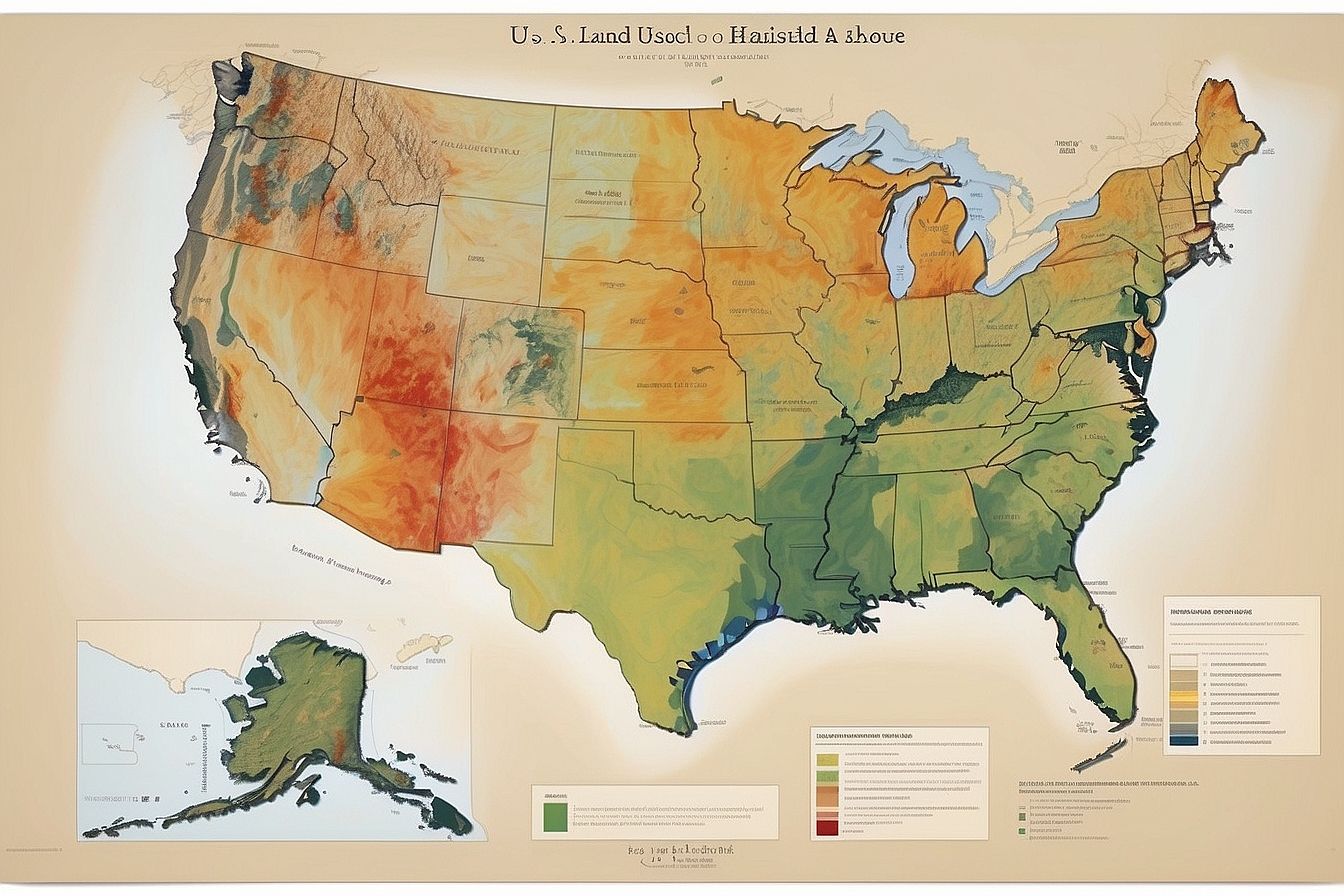We can’t help but feel a twinge of concern when we witness the delicate equilibrium of nature being disrupted by thoughtless land use. It’s a sentiment that resonates with us all, as we’ve watched ecosystems teeter on the brink without the guardianship they so desperately need.
The startling truth is that nearly 2.5 billion individuals rely on indigenous and community lands to sustain their way of life. Our in-depth exploration into land rights reveals potent solutions that promise to elevate environmental justice and breathe new life into our precious planet.
Uncover how ensuring these rights are respected and protected can lead to a transformative effect on our world, restoring balance not just within nature but among communities who look to this earth as their home.
Key Takeaways
- Secure land ownership empowers communities to use traditional knowledge for sustainable management, which preserves biodiversity and provides climate resilience.
- Inadequate land rights leave Indigenous peoples vulnerable to neoliberal policies that can lead to environmental degradation and impact their ability to adapt to climate changes.
- The struggle for land rights by traditional communities often involves overcoming legal hurdles, facing disenfranchisement due to extraction industries, and advocating for representation in decision-making.
- Establishing secure community land rights is key in mitigating climate change effects through better resource management, forest conservation, and enhanced carbon sequestration efforts.
- Recognising the significance of land ownership contributes towards meeting Sustainable Development Goals related to poverty reduction, gender equality, responsible consumption and fostering environmental stewardship.
The Connection Between Land Rights and Environmental Justice
Secure land ownership is crucial for environmental justice, as lack of land rights can impact climate resilience and contribute to environmental degradation. It is important to understand the relationship between traditional communities, Indigenous peoples, and their fight for land rights in achieving sustainable land management and environmental protection.
Importance of secure land ownership
We understand how crucial it is for communities to have secure land ownership. It’s a cornerstone for environmental justice and paves the way for sustainable land management. When people firmly hold their land rights, they can protect their environment better and make decisions that lead to long-lasting ecological benefits.
Communities with strong ties to their ancestral lands often employ traditional knowledge in forest stewardship, which has proven vital in preserving biodiversity.
Owning land securely also empowers Indigenous peoples to fight against environmental racism and inequality. They gain a voice in managing natural resources, which is essential when facing off against exploitative neoliberal policies or large corporations bent on environmental degradation.
With the right support, these communities become formidable advocates for climate justice and are integral in pushing forward meaningful climate action that respects both the planet and human rights.
Impact of lack of land rights on climate resilience
Ensuring secure land ownership is crucial for climate resilience. Without proper land rights, communities struggle to implement sustainable practices such as forest management and land stewardship.
This lack of control over their lands makes it difficult for them to adapt to changing climates, threatening their ability to maintain traditional livelihoods and resources.
Communities facing land dispossession are particularly vulnerable to the impacts of climate change due to their limited access to resources needed for adaptation. Indigenous peoples and traditional communities with insecure land rights experience environmental inequality, hindering their capacity to respond effectively to climatic changes.
The Fight for Land Rights and Environmental Justice
Traditional communities face numerous challenges in securing their land rights, especially against the backdrop of neoliberal policies that often threaten their access to natural resources.
The fight for land rights is crucial not only for indigenous peoples but also for climate resilience and achieving sustainable development goals.
Challenges faced by traditional communities
Traditional communities often face challenges in securing and defending their land rights. Despite the importance of secure land ownership for their well-being, these communities encounter various obstacles such as limited legal recognition and protection of their ancestral lands.
Their efforts to preserve ecosystems and biodiversity are hindered by encroachments from development projects and extractive industries.
Furthermore, traditional communities struggle with inadequate representation in decision-making processes that impact their territories. Neoliberal policies often overlook the rights of Indigenous peoples, exacerbating inequality and environmental degradation.
Neoliberal policies and their effect on Indigenous peoples
Neoliberal policies have significantly impacted Indigenous peoples, often leading to the exploitation and marginalisation of their land rights. The prioritisation of economic growth over environmental and social justice has resulted in the erosion of traditional communities’ sovereignty over their ancestral lands.
This has perpetuated a cycle of disproportionate poverty, limited access to resources, and increased vulnerability to environmental hazards among Indigenous populations. Consequently, these policies have hindered the ability of Indigenous communities to engage in sustainable land management practices that are essential for mitigating climate change impacts.
In addition, neoliberal policies have exacerbated disparities in resource distribution, further disenfranchising Indigenous peoples from accessing vital natural resources necessary for their livelihoods.
Such challenges highlight the urgent need for equitable policy reforms that safeguard the land rights and autonomy of Indigenous communities while ensuring sustainable environmental stewardship.
How securing community land rights can slow climate change
Securing community land rights is crucial for slowing climate change. When traditional communities have secure land ownership, they are better equipped to protect and manage natural resources sustainably.
This can lead to reduced deforestation, more effective carbon sequestration in forests, and the preservation of biodiversity. By empowering Indigenous peoples and local communities with land sovereignty, we can mitigate the impacts of climate change and contribute to global environmental stability.
The fight for securing community land rights directly aligns with achieving the Sustainable Development Goals (SDGs), particularly those related to environmental sustainability. Through increased access to and control over their lands, Indigenous peoples and traditional communities can play a significant role in conservation efforts, influencing environmental policies, and promoting sustainable resource management practices.
The role of land ownership in achieving the Sustainable Development Goals
Securing land rights is crucial for achieving the Sustainable Development Goals (SDGs) as it enables communities to manage their resources sustainably. When communities have secure land ownership, they are more likely to invest in long-term environmental conservation and sustainable development projects, contributing positively towards SDG targets related to poverty reduction, gender equality, and responsible consumption.
Additionally, securing land rights empowers indigenous peoples and traditional communities to protect their territories from unsustainable resource extraction and deforestation. It also fosters environmental stewardship by promoting practices that support biodiversity conservation and ecosystem restoration.
By recognising the importance of land ownership in achieving the SDGs, we can advocate for policies that respect indigenous land rights and promote inclusive environmental governance aligned with sustainable development objectives.
Environmental and developmental benefits of securing land rights
Transitioning from the role of land ownership in achieving the Sustainable Development Goals, securing land rights brings about a range of environmental and developmental advantages.
By granting communities secure land ownership, we are enabling them to participate in sustainable resource management. This empowerment leads to better stewardship of natural resources, contributing to biodiversity conservation and climate change mitigation.
Moreover, securing land rights results in improved access to credit and investment opportunities for communities, fostering economic development and poverty reduction while providing a solid foundation for sustainable livelihoods.
Conclusion
Securing land rights is crucial for environmental justice, ensuring communities have access to and control over their territories. Neoliberal policies often disregard Indigenous peoples’ traditional land rights, impacting climate resilience.
Environmental activism plays a vital role in advocating for tribal land rights and promoting sustainable development goals. Protecting community land rights not only benefits the environment but also contributes to achieving global environmental justice movements.
FAQs
1. What are land rights and why do they matter for environmental justice?
Land rights refer to the legal recognition of a person’s or group’s authority over a piece of land, which is crucial in environmental justice movements as it affects their ability to preserve and manage natural resources.
2. How do tribal programmes relate to land rights and environmental justice?
Tribal programmes often play a key role in advocating for tribal land rights, ensuring that indigenous communities have access to their ancestral lands and can participate actively in environmental activism.
3. Can improving land access help with environmental justice efforts?
Yes, improving land access allows more people, especially marginalised communities, to contribute to sustainable practices and join the fight for fair treatment within environmental policies.
4. What is the link between environmental activism and securing land rights?
Environmental activism frequently includes efforts to secure land rights because having control over a territory enables communities to protect the environment effectively against unjust exploitation.





